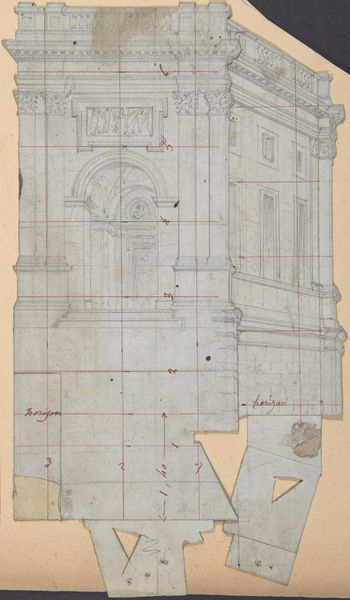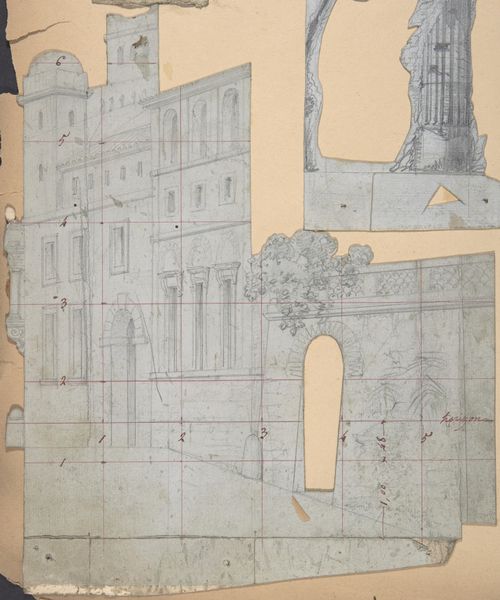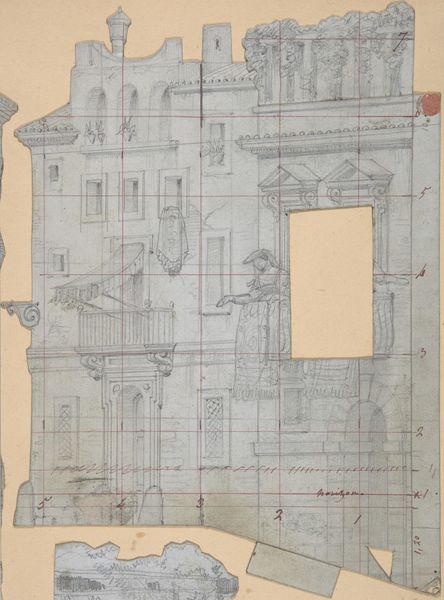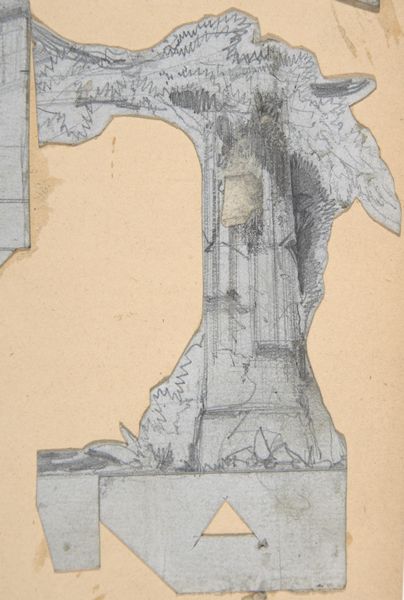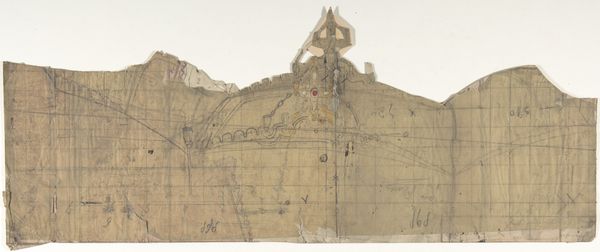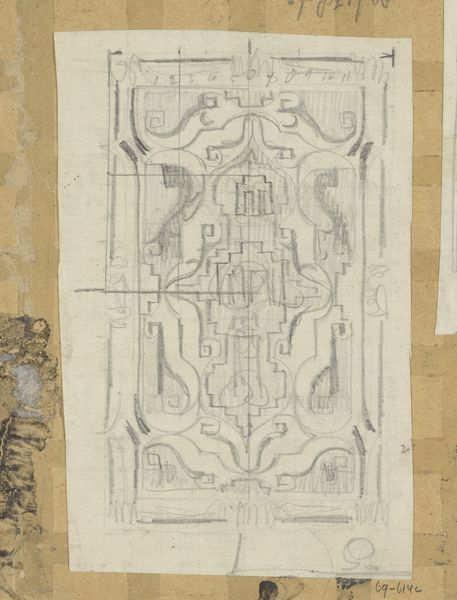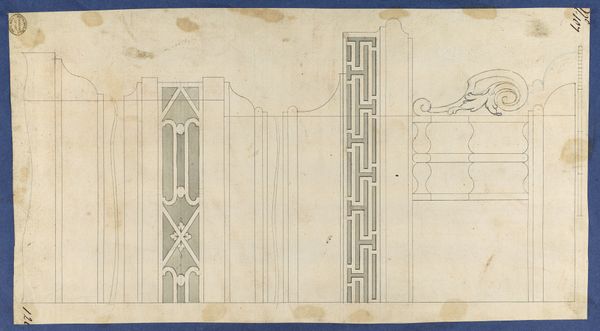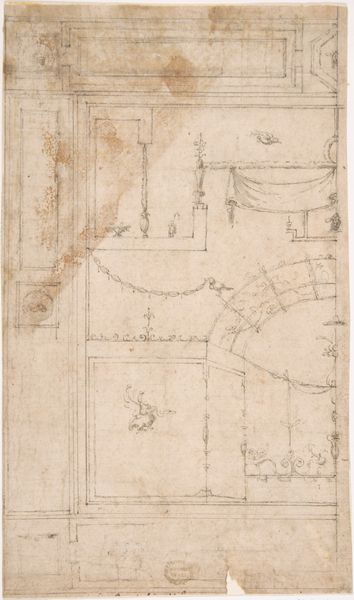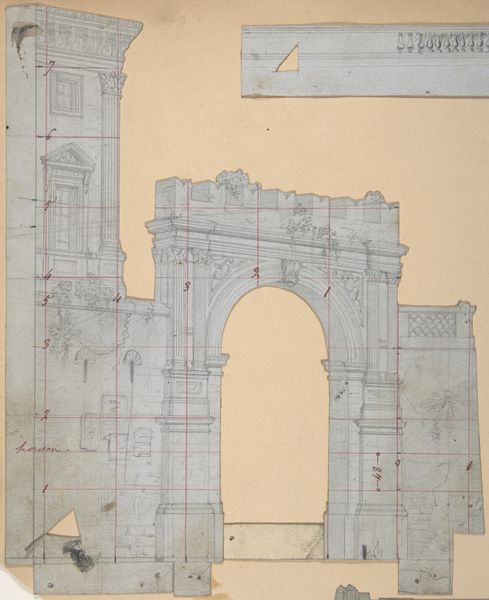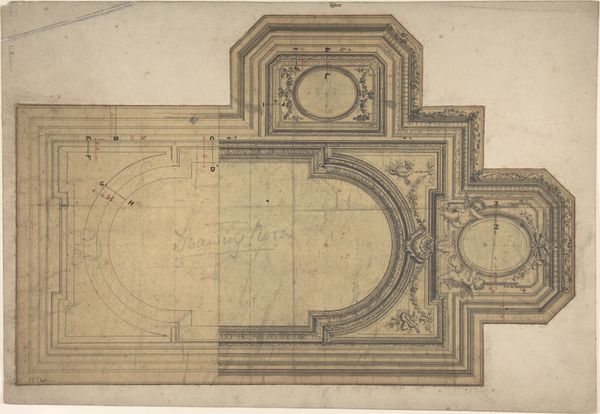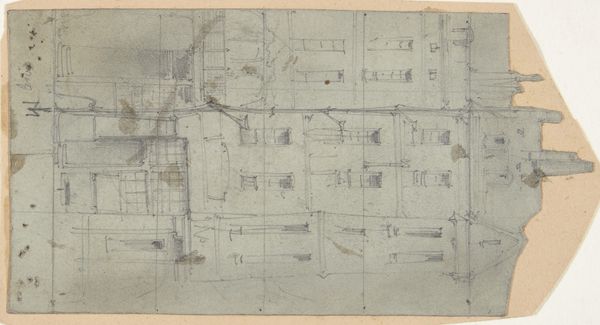
Design for a Stage Set at the Opéra, Paris 1830 - 1890
0:00
0:00
drawing, print, architecture
#
drawing
#
neoclacissism
# print
#
form
#
line
#
cityscape
#
watercolor
#
architecture
Dimensions: Irregular sheet: 10 3/8 x 3 1/2 in. (26.3 x 8.9 cm)
Copyright: Public Domain
Eugène Cicéri created this stage set design for the Paris Opéra, using graphite and watercolor on paper. Look closely, and you'll notice the grid that Cicéri used to translate the design to a larger scale. This points to a fascinating intersection of artistic skill and industrial-style production. In 19th-century opera houses, stage sets were crucial to creating a compelling spectacle. It was a collaborative endeavor, relying on skilled artisans to execute the designs, with each element contributing to the overall theatrical experience. The precision of the drawing, and the attention to detail, were essential for realizing a convincing illusion on stage. But in the theater, the design would only come alive through the labor of carpenters and painters, the work of many hands, all operating below the radar of the opera's stars. The design itself, then, is just one part of the story. It only truly comes alive through the collective efforts of stagehands, artists, and performers.
Comments
No comments
Be the first to comment and join the conversation on the ultimate creative platform.
